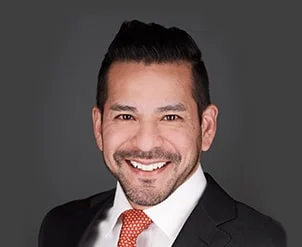Bankruptcy In The Ohio Valley
Although the gross numbers have dropped precipitously, the filing rate for all kinds of bankruptcies remains high in Kentuckiana.
The number of cases has dropped by 40 and 44 percent in Kentucky and Indiana since 2010, but the states still rank eighth and sixth in terms of the number of filings per person. Statistically, lower wage-earning areas usually have higher bankruptcy filing rates, because according to New Albany bankruptcy lawyer Lloyd Koehler, falling behind “only requires one catastrophic event” for households that already struggle to make ends meet. Some other residents of this area are on the other end of the spectrum, as they have more debt than they can realistically afford to repay.
However, most folks from this area are in that first category. “Low-wage jobs punctuate an already difficult situation,” commented U.S. Bankruptcy Judge Joan Lloyd.
Chapter 13 Bankruptcy
There’s a reason this type of bankruptcy is sometimes called the “wage earner” plan, because in a nutshell, Chapter 13 debtors must have sufficient income to catch up on all past-due secured loans, like mortgages and car notes, within the three or five year repayment period. During this time, the automatic stay generally keeps moneylenders from taking adverse action against debtors, so in effect, the bank must accept the repayment terms that the debtor proposes, as long as the trustee (person who oversees the bankruptcy on behalf of the judge) approves of the plans.
In these plans, all past-due secured debts are consolidated into a single monthly payment that goes through the trustee; in some jurisdictions and some plans, regular secured debt payments go through the trustee as well. If the debtor has the funds to pay off these secured debt sooner, the bankruptcy process wraps up sooner as well.
Chapter 7 Bankruptcy
According to the Atlanta Federal Reserve, wage growth plummeted during the Great Recession and it is just now returning to its 2008 levels. So, lower wage earners are caught in a very bad position, because inflation is starting to creep back up as well. With prices rising almost as fast as wages, working-class families seemingly have nowhere to turn if a financial crisis hits, such as a divorce, serious illness, or job loss.
Chapter 7 bankruptcy is normally the place to go in these situations. In addition to the automatic stay’s protection against adverse action, such as moneylender harassment and wage garnishment, Chapter 7 discharges (forgives) most unsecured debts in as little as a few months. Therefore, instead of a death spiral of debt, families obtain fresh financial starts and are able to move on with their lives.
Wait-and-See
Debtors have an absolute right under the Bankruptcy Code to convert from Chapter 13 to Chapter 7 at any time, assuming they meet the means test qualification. Conversion is an excellent tool for those families who are on the borderline between repayment and liquidation.
A common strategy involves filing a Chapter 13 and then making the first few debt consolidation payments, to see how things work. Many times, the financial sacrifice is not nearly as bad as the family expected, and three or five years later, the family is essentially out of debt. However, if the payments are too much and the trustee refuses to modify the plan, the conversion to Chapter 7 is almost seamless and the entire matter is concluded quickly.
Rely on Experienced Lawyers
Bankruptcy eliminates debt. For a free consultation with an experienced bankruptcy lawyer in Chicago, contact the Bentz Holguin Law Firm, LLC. We have offices in both Indiana and Illinois.
Resources:
frbatlanta.org/chcs/wage-growth-tracker/?panel=1
courier-journal.com/story/money/personal-finance/2016/11/26/done-debt-bankruptcy-plagues-kentuckiana/91906658/


